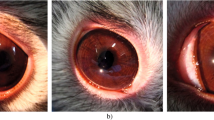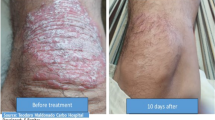Abstract
Twelve non-steroidal anti-inflammatory agents (NSAI's) and one steroidal anti-inflammatory agent, dexamethasone, were examined in the carrageenan edema test (CET) in the rat and in the ultraviolet light-induced erythema test (UVE) in the guinea pig to evaluate the correlation between those models of inflammation and the clinical dose of the NSAI's in the treatment of rheumatoid arthritis. The regression of the logarithm of the clinical dose with the logarithm of the ED50 for UVE gave a slope of 0.54 implying a non-parallelism of assays and a difference in mechanism. Dexamethasone failed to inhibit the UVE thereby corroborating this point. The parallelism of the logarithm of the clinical dose with the logarithm of the ED50 for the CET was substantially better (slope=0.86). Dexamethasone was active in CET and its dose would be predicted by the CET regression. When only one variable was used for a prediction, log(CET) was a better predictor of log (clinical dose) than log(UVE). Standard methods for best regression selection indicated that even when both predictor variables were considered, log(CET) alone gave the best regression equation for predicting clinical dose. The view that inhibition of prostaglandin biosynthesis is the primary anti-inflammatory mechanism of NSAI's in rheumatoid arthritis is discussed in terms of these findings.
Similar content being viewed by others
References
G. Wilhemi,Über die pharmakologischen Eigen schaften von Irgapyrin, einem neuen Praparat aus der Pyrazolreihe, Schweiz. Med. Wchnschr.79, 577–582 (1949).
G. Wilhemi,Ueber die antiphlogistische Wirkung von Pyrazolen, speziell Irgapyrin, bei peroraler und parenteraler Verabreichung, Schweiz. Med. Wchnschr.80, 936–940 (1950).
C.V. Winder, J. Wax, V. Burr, M. Been andC.E. Rosiere,A Study of Pharmacological Influences on Ultraviolet Erythema in Guinea Pigs, Arch. Int. Pharmacodyn.116, 261–292 (1958).
C.A. Winter, E.A. Risley andG.W. Nuss,Carrageenan-Induced Edema in Hind Paw of the Rat as an Assay for Antiinflammatory Drugs, Proc. Soc. Exp. Biol. Med.111, 544–547 (1962).
N. Gupta andL. Levy,Delayed Manifestation of Ultraviolet Reaction in the Guinea Pig Caused by Anti-Inflammatory Drugs, Br. J. Pharmac.47, 240–248 (1973).
E.M. Bavin, T.J. Drain, D.E. Seymour andP.D. Waterhouse,Antiinflammatory Compounds, The Activity of a Series of New Compounds Compared with Phenylbutazone and Cortisone, J. Pharm. 7, 1022–1031 (1955).
J.R. Vane,Inhibition of Prostaglandin Synthesis as a Mechanism of Action for Aspirin-like Drug, Nature231, 232–233 (1971).
D.S. Synder,Effect of Topical Indomethacin on UVR-induced Redness and Prostaglandin E Levels in Sunburn Guinea Pig Skin Prostaglandins11, 631–643 (1976).
A.L. Willis,Parallel Assay of Prostaglandin-like Activity in Rat Inflammatory Exudate by Means of Cascade Superfusion, J. Pharm. Pharmacol.21, 126–128 (1969).
J.G. Lombardino, I.G. Otterness andE.H. Wiseman,Acidic Antiinflammatory Agents—Correlations of Some Physical, Pharmacological and Clinical Data, Arzneim.-Forsch.25, 1629–1635 (1975).
E.H. Wiseman, Y.-H. Chang andJ.G. Lombardino,Piroxicam, a Novel Anti-inflammatory Agent, Arzneim.-Forsch.26, 1300–1303 (1976).
K.F. Swingle, R.R. Hamilton, J.K. Harrington andK.C. Kvam,3-Benzoyldifluoromethane-sulfonanilide, Sodium Salt (Diflumidone Sodium, MBR 4164-8): A New Antiinflammatory Agent, Arch. Int. Pharmacodyn.189, 129–144 (1971).
S.S. Adams, D.F. McCullough andJ.S. Nicholson,The Pharmacological Properties of Ibuprofen, an Anti-inflammatory, Analgesic and Antipyretic Agent, Arch. Int. Pharmacodyn.178, 115–129 (1969).
L. Julou, J.C. Guyonnet, R. Ducrot, J. Fournel andJ. Pasquet,Ketoprofen (19.583 R.P.), Main Pharmacological Properties—Outline of Toxicological and Pharmacokinetic Data, Scand. J. Rheum. Suppl.14, 33–44 (1976).
S. Wong, J.F. Gardocki andT.P. Pruss Pharmacologic Evaluation of Tolectin (Tolmetin, McN-2559) and McN-2891, Two Anti-Inflammatory Agents, J. Pharm. Exp. Ther.185, 127–138 (1973).
C.V. Winder, J. Wax, B. Serrano, E.M. Jones andM.L. McPhee,Antiinflammatory and Antipyretic Properties of N-(α,α,α-Trifluoro-m-tolyl)anthranilic Acid (CI-440; Flufenamic Acid), Arth. Rheum.6, 36–47 (1963).
S.S. Adams, K.F. McCullough andJ.S. Nicholson,Some Biological Properties of Flurbiprofen, an Anti-inflammatory, Analgesic and Antipyretic Agent, Arzneim.-Forsch.25, 1786–1791 (1975).
N.R. Draper andH. Smith,Applied Regression Analysis (John Wiley & Sons, New York, 1966).
J. Sondergaard andM.W. Greaves,Pharmacologic Studies in Inflammation Due to Exposure to Ultraviolet Radiation, J. Pathol.101, 93–97 (1970).
G.P. Mathur andV.M. Ghandi,Prostaglandin in Human and Albino Skin, J. Invest. Dermatol.58, 291–295 (1972).
R. Flower, R. Gryglewski, K. Herbaczynska-Cedro andJ.R. Vane,Effect of Antiinflammatory Drugs on Prostaglandin Biosynthesis, Nature New Biol.238, 104–105 (1972).
A. Danon andG. Assouline,Inhibition of Prostaglanding Biosynthesis by Corticosteroids Requires RNA and Protein Synthesis, Nature273, 552–554 (1978).
M. Dirosa, J.P. Giroud andD.A. Willoughby,Studies of the Mediators of the Acute Inflammatory Response Induced in Rats in Different Sites by Carrageenan and Turpentine, J. Pathol.104, 15–29 (1971).
J.R. Walker, M.J.H. Smith andA.W. FordHutchinson,Anti-inflammatory Drugs, Prostaglandins and Leucocyte Migration, Agents and Actions615, 602–606 (1976)
I.L. Bonta, H. Bult, J.E. Vincent andF.J. Zijlstra,Acute Antiinflammatory Effect of Aspirin and Dexamethasone in Rats Deprived of Endogenous Prostaglandin Precursors, J. Pharm. Pharmacol.29, 1–7 (1977).
S. Moncada, S.H. Ferreira andJ.R. Vane,Prostaglandins, Aspirin-like Drugs and the Oedema of Inflammation, Nature246, 127–128 (1973).
E.C. Huskinsson,Antiinflammatory Drugs, Seminars Arth. Rheum.7, 1–20 (1977).
N.E. Pitts andR.R. Proctor,Summary: Efficacy and Safety of Piroxicam, Royal Soc. Med. Intl. Cong. Symp. Ser.1, 97–108 (1978).
Author information
Authors and Affiliations
Rights and permissions
About this article
Cite this article
Otterness, I.G., Wiseman, E.H. & Gans, D.J. A comparison of the carrageenan edema test and ultraviolet light-induced erythema test as predictors of the clinical dose in rheumatoid arthritis. Agents and Actions 9, 177–183 (1979). https://doi.org/10.1007/BF02024731
Received:
Issue Date:
DOI: https://doi.org/10.1007/BF02024731




